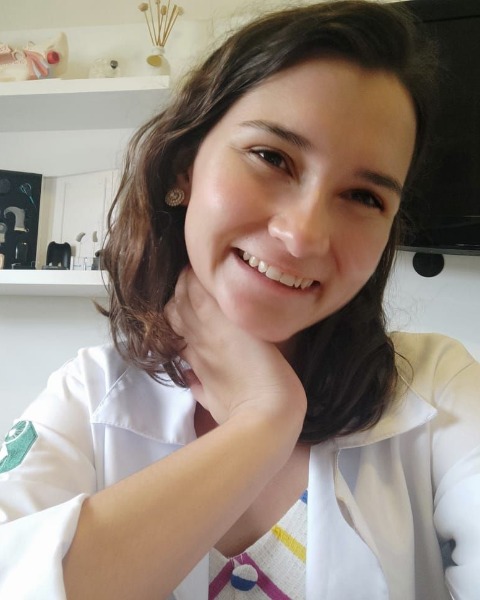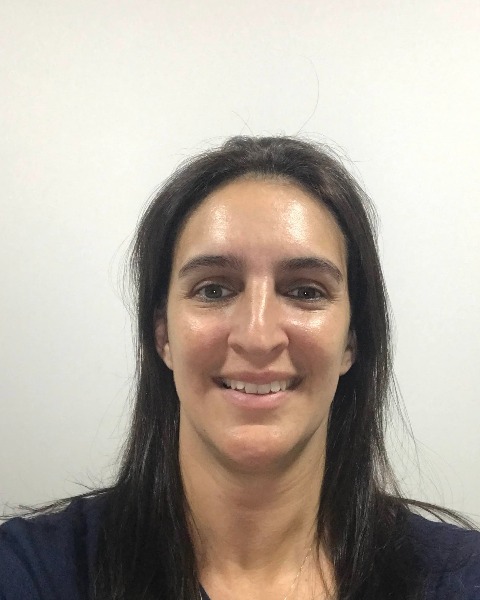Pediatrics (P)
PP1118 - Evaluation of the Auditory System in Infants with Vertical Exposure to COVID-19

Jheniffer Q. Queiroz Raimundo, MS (she/her/hers)
Master student
UNICAMP
University of Campinas
Valinhos, Sao Paulo, BrazilFinancial Disclosures: I do not have any relevant financial relationships with anything to disclose.
Non-Financial Disclosures: I do not have any relevant non-financial relationships with anything to disclose.- MC
Maria Francisca Colella-Santos, PhD (she/her/hers)
Full Professor
Unicamp
UNICAMP- BRAZIL
São Paulo, Sao Paulo, BrazilFinancial Disclosures: I do not have any relevant financial relationships with anything to disclose.
Non-Financial Disclosures: I do not have any relevant non-financial relationships with anything to disclose. 
Thais Antonelli Diniz-Hein, PhD (she/her/hers)
Audiologist
UNICAMP
UNICAMP
Valinhos, Sao Paulo, BrazilFinancial Disclosures: I do not have any relevant financial relationships with anything to disclose.
Non-Financial Disclosures: I do not have any relevant non-financial relationships with anything to disclose.
Presenter(s)
Lead Presenter(s)
Contributor(s)
Purpose: Analyze the auditory development of infants whose mothers had COVID-19 during pregnancy.
Design: The sample consists of infants up to one year old. To evaluate the auditory system, we carried out behavioral observation for verbal and non-verbal sounds, Brainstem Auditory Evoked Potential, tympanometry, Evoked Otoacoustic Emissions and Contralateral Suppression of Evoked Otoacoustic Emissions.
Conclusion: the results so far do not show a relationship between vertical exposure to COVID-19 and the presence of altered hearing thresholds, but do show a lower effectiveness of the medial olivocochlear system in infants exposed to the SARS-CoV-2 virus in the intrauterine period.
Summary:
Introduction: COVID-19 is an infectious disease caused by the SARS-CoV-2 virus, a new virus from the coronavirus family. Transmission is mostly by the respiratory route, but research on other modes of disease transmission has been conducted, and some studies have shown the possibility of vertical transmission. The presence of placental viral infection in the fetus can affect the formation of the auditory system and cause congenital hearing loss.
Objectives: to analyze the auditory development of infants whose mothers had COVID-19 during pregnancy. Rationale: having in mind the restricted number of researches about the impacts caused by the SARS-COV-2 virus infection in the auditory system and in the auditory development of newborns whose mothers tested positive for COVID-19 during gestation, and the possibility of viral infections causing damage to the auditory system, causing permanent or temporary alterations in the hearing function, research on the topic is necessary, seeking to better understand the possible outcomes of the cases.
Design: the sample consists of infants up to one year old whose mothers were infected with SARS-CoV-2 during pregnancy. To evaluate the auditory system, we carried out behavioral observation for verbal and non-verbal sounds, Brainstem Auditory Evoked Potential (BAEP), tympanometry, Transient and Distortion Product Evoked Otoacoustic Emissions (TOAE) and Contralateral Suppression of Evoked Otoacoustic Emissions (OAE). The results found were compared with the normality standards described in the literature.
Results: up to now, no changes were found in BAEP, tympanometry, transient and distortion product evoked otoacoustic emissions tests. But in the contralateral suppression procedure of evoked otoacoustic emissions we noticed a lower effectiveness when compared to data in the literature. It is noteworthy that in all the cases evaluated, the mother tested positive for the SARS-COV-2 virus during the third trimester of pregnancy. One of the cases analyzed had as final diagnosis the auditory neuropathy spectrum, but this case was excluded from the analysis because the newborn presented the risk indicator of staying in a Neonatal Intensive Care Unit.
Conclusion: the results so far do not show a relationship between vertical exposure to COVID-19 and the presence of altered hearing thresholds, but do show a lower effectiveness of the medial olivocochlear system in infants exposed to the SARS-CoV-2 virus in the intrauterine period. However, further studies on this topic are needed, evaluating the relationship between exposure to the virus in the different trimesters of pregnancy.
Learning Objectives:
- Upon completion,participants will be able to analyze the auditory development of infants whose mothers had COVID-19 during pregnancy.
